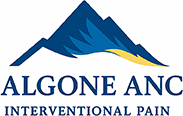What is Medication-Assisted Therapy (MAT)?
Medication-assisted therapy or treatment (MAT) is the use of FDA-approved medications in combination with behavioral and counseling therapies for the treatment of substance use disorders (SUDs). MAT is primarily used for the treatment of addiction to prescription opioids such as hydrocodone, codeine, oxycodone, and morphine and non-prescription opiates like heroin. It can also be employed to treat alcohol use disorder. The longer the therapy, the more the patients will be able to manage their dependency and progress toward recovery.
Types of MAT Medications
The 3 FDA-approved medications involved in MAT are naltrexone, buprenorphine, and methadone.
- Methadone: Methadone is a long-acting synthetic opioid agonist medication that can reduce craving and prevent withdrawal symptoms in people with opioid dependence. It can also block the euphoric effects of illicit opioids. It has a long history of use in the treatment of opioid dependence and is usually taken orally.
- Buprenorphine: Buprenorphine is a synthetic opioid medication that works as a partial agonist at opioid receptors, but does not produce the sedation and euphoria caused by heroin or other opioids. Buprenorphine is able to eliminate or reduce withdrawal symptoms and cravings for drugs connected with opioid dependence and carries a low risk of overdose. It can be administered as a tablet or as an implant or injection.
- Naltrexone: Naltrexone is a synthetic opioid antagonist that blocks opioids from binding to the receptors and prevents the euphoric and sedating effects of opioids on the brain. Naltrexone itself has no subjective effects following detoxification and has no possibility for abuse. Even if patients were to relapse while on naltrexone, they would not experience opioid effects. Naltrexone is given either as a daily tablet or a monthly injection. It can be prescribed by any clinician or doctor.
How Does Medication-Assisted Therapy (MAT) Work?
Research has demonstrated that when provided at a proper dose, medications used in MAT have no adverse effects on an individual’s physical functioning, mental capability, or intelligence. It addresses the difficulties that one experiences when they stop taking opioids and help in:
- Reducing substance cravings
- Reestablishing normal brain function
- Preventing relapse
- Blocking the euphoric effects of substances
- Alleviating withdrawal symptoms
- Sustaining recovery and preventing overdose
- Enabling patients to concentrate on personal obligations during recovery
How Long Does Medication-Assisted Therapy (MAT) Last?
The duration of MAT differs, depending upon the type of medication utilized and the needs of the individual patient. Patients receiving methadone are recommended to undergo treatment for at least 1 year, as per guidelines from the National Institute on Drug Abuse. After the first ninety days of methadone treatment, the dose should be slowly decreased until the patient is on a maintenance level amount. Gradually, the patient may be able to taper the dose even more until the methadone is no longer required.
The therapy timeline for buprenorphine may be only a few months or several years. Once the patient has been noted to be sober for a specific period, the dose may be decreased to a maintenance level amount. Gradually, the dose may be reduced even more over a period of 4 to 6 months until the treatment concludes.
The standard therapy timeline for naltrexone is around 12 weeks to aid in eliminating the need for opioids. Patients should work with their physicians to determine when to conclude treatment. As naltrexone acts as an antagonist, patients should be careful about its use and totally avoid opioids during treatment. There is a chance of overdosing while on naltrexone as the effects of the opioids are not experienced.
How Effective is Medication-Assisted Therapy (MAT)?
MAT has been effective in helping individuals overcome substance use disorders. It is an evidence-based treatment form, meaning there is research proving its effectiveness. As per the Substance Abuse and Mental Health Services Administration (SAMHSA), MAT is “clinically effective” and notably decreases the need for inpatient detoxification. It has also been shown to be effective in preventing overdoses. MAT offers a more comprehensive, individually tailored program of medication and behavioral therapy that address the requirements of most patients. The main objective of MAT is full recovery, including the ability to live a self-directed life. This treatment approach has been shown to:
- Increase treatment retention
- Improve patient survival
- Reduce the use of illicit opiates and other criminal activity among those with substance use disorders
- Enhance patients’ ability to gain and maintain employment
- Boost birth outcomes among women who have substance use disorders and are pregnant
Research also shows that MAT accompanied by therapies can contribute to reducing an individual’s risk of contracting hepatitis C or HIV by reducing the possibility of relapse.






